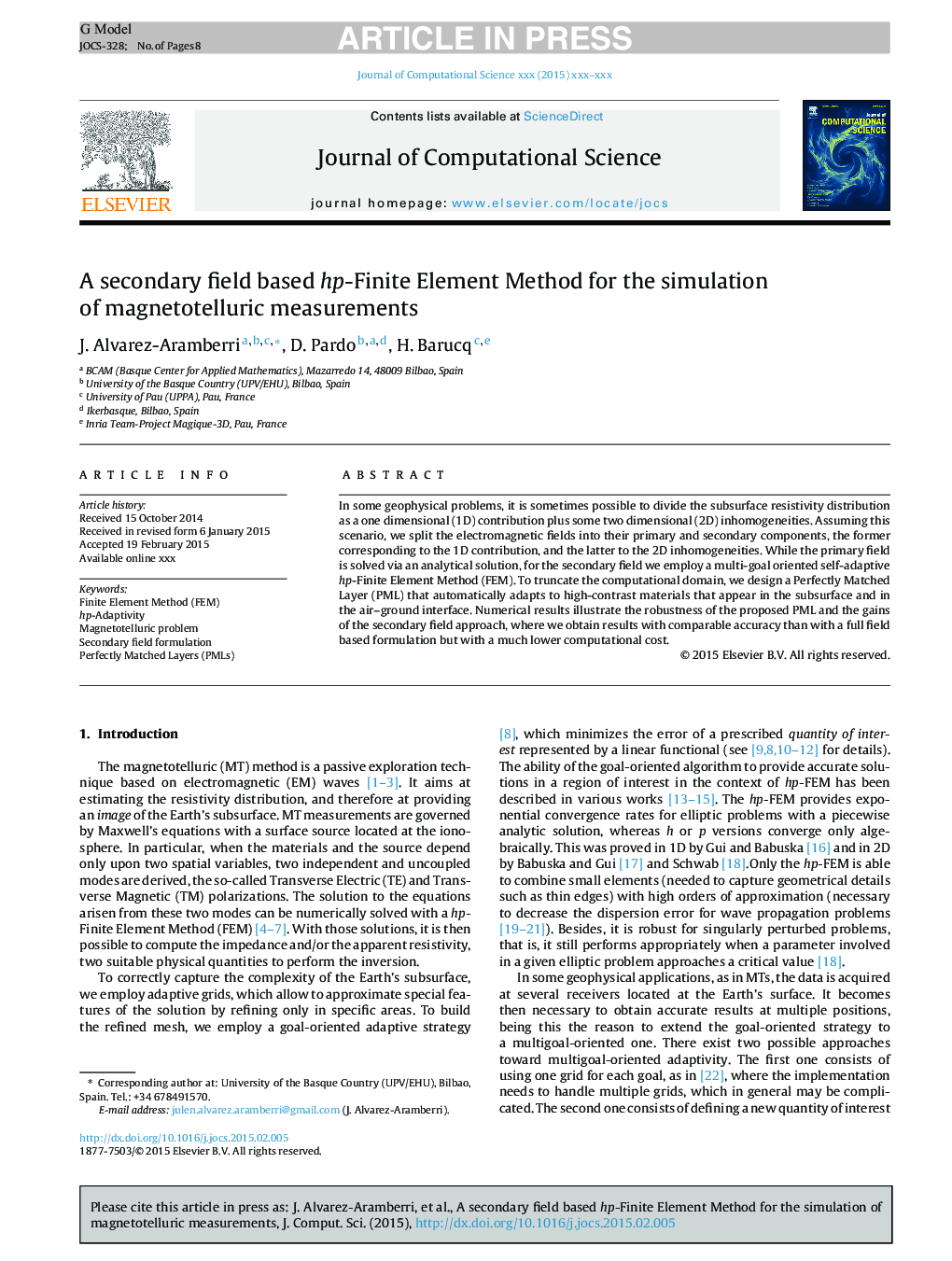| Article ID | Journal | Published Year | Pages | File Type |
|---|---|---|---|---|
| 6874567 | Journal of Computational Science | 2015 | 8 Pages |
Abstract
In some geophysical problems, it is sometimes possible to divide the subsurface resistivity distribution as a one dimensional (1D) contribution plus some two dimensional (2D) inhomogeneities. Assuming this scenario, we split the electromagnetic fields into their primary and secondary components, the former corresponding to the 1D contribution, and the latter to the 2D inhomogeneities. While the primary field is solved via an analytical solution, for the secondary field we employ a multi-goal oriented self-adaptive hp-Finite Element Method (FEM). To truncate the computational domain, we design a Perfectly Matched Layer (PML) that automatically adapts to high-contrast materials that appear in the subsurface and in the air-ground interface. Numerical results illustrate the robustness of the proposed PML and the gains of the secondary field approach, where we obtain results with comparable accuracy than with a full field based formulation but with a much lower computational cost.
Related Topics
Physical Sciences and Engineering
Computer Science
Computational Theory and Mathematics
Authors
J. Alvarez-Aramberri, D. Pardo, H. Barucq,
